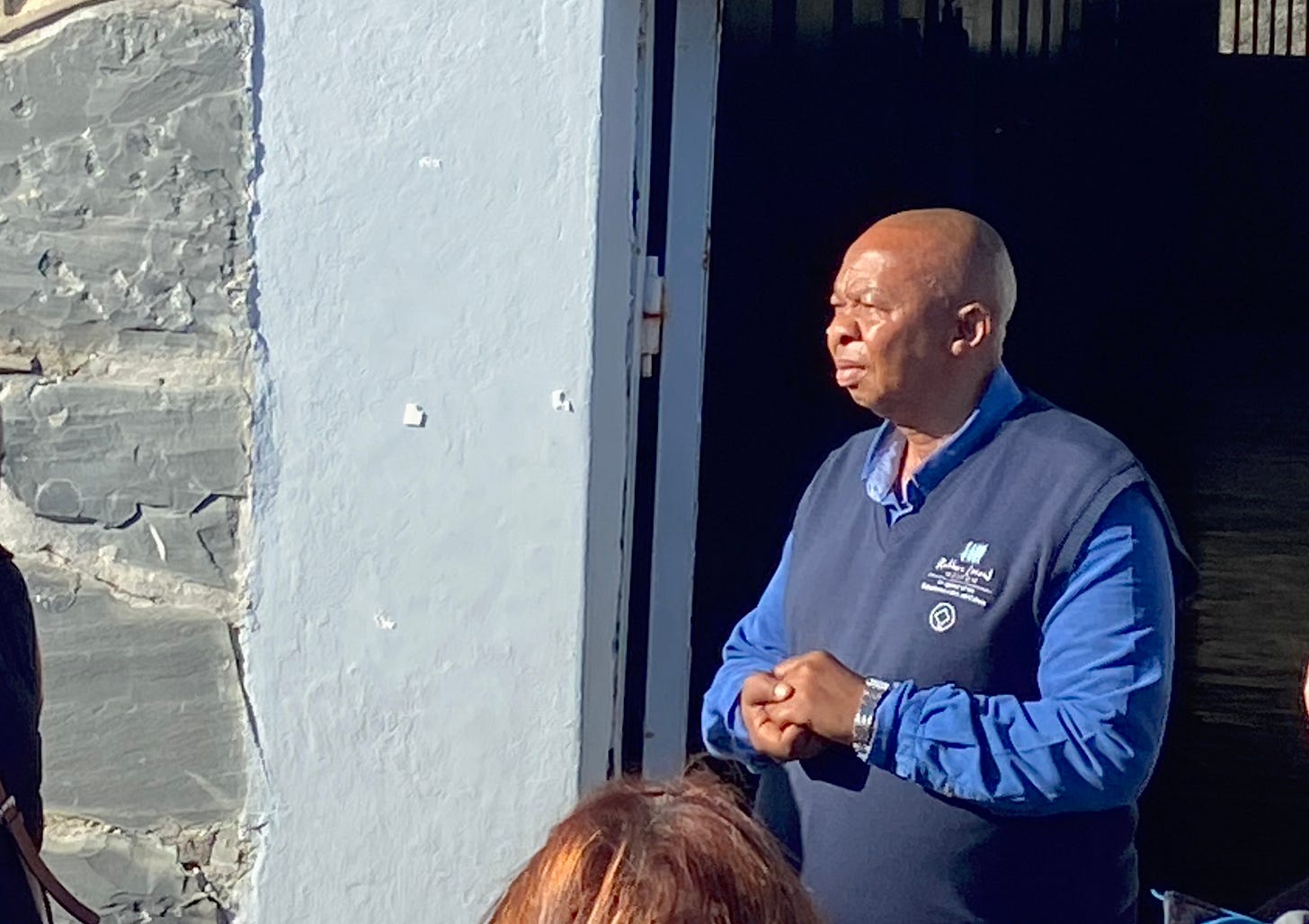Independence Day on South Africa’s Robben Island
How visiting a place of bondage made me reflect on freedom
This is the third time I’ve spent the 4th of July outside the United States. The other two times were in Latin America years ago.
Yesterday, instead of grilling out burgers and attending an evening fireworks show, I took a seven-mile boat ride to Robben Island, off Cape Town, South Africa, where Nelson Mandela and other political prisoners spent years imprisoned under their government’s apartheid regime.
On a day when we Americans celebrate our independence from Great Britain, I spent the day reflecting on the South African men imprisoned because of their fight for independence.
It made for an unorthodox 4th of July.
Mandela spent 18 of his 27 imprisoned years on the island. Between 1962 and 1990, the South African government imprisoned more than 3,000 non-white men convicted of various political crimes on Robben Island, the latest chapter in four centuries of European powers using it to warehouse opponents and outcasts.
Robben Island was more than just a prison; it was a place of physical and psychological torture. The history is so recent that our guide, Sparks Mlilwana, spent seven years as a Robben Island political prisoner. He arrived in 1983 at age 17 on charges of terrorism because of his involvement with the militant wing of Mandela’s African National Congress, uMkhonto we Sizwe.

It’s one thing to visit a site like Robben Island. It’s another to hear Prisoner 5683, as Sparks was known while on the island, show the Section D communal cell where he slept on the concrete floor with about 60 other prisoners. Rain often blew into the room because the barred windows had no glass, making the cell remain damp and ripe for sickness. He described the limited and sometimes spoiled food they ate while sitting on a uncovered concrete slab outside the prison. While we wore jackets and pants, he shared how he and the other prisoners were only issued shorts and short-sleeved shirts—no underwear, socks, or shoes. Each day, Sparks and the others walked barefoot to a nearby lime quarry where they chiseled rock with hand tools. Guards routinely subjugated prisoners to solitary confinement or severe beatings, either because of a perceived offense or at random to undermine morale.

Perhaps most cruel was Robben Island’s visitor policy. Prisoners could only receive one visit per year for 30 minutes. The conversation could only be held in English or Afrikaans. If family members couldn’t speak those languages, they could only look at each other. Sparks didn’t see his parents for five years because the government turned down their application each year.
It’s hard to believe that this harsh treatment occurred during my lifetime. In 1990, the South African government released political prisoners. Four years later, the nation held its first fully democratic election, bringing Mandela to the presidency. The newly elected government spent the next two years hammering out a new constitution that would guarantee the rights of all South Africans for the first time.
South Africa has a long way to go in healing from its past, reducing extreme poverty, and providing basic infrastructure (i.e, I’m writing this article on my phone during a daily scheduled outage due to an electricity shortage). However, the new government’s commitment to telling the unvarnished story of the past to keep it from happening again is worth celebrating. Men like Sparks and the dozen other ex-prisoners who now live on the island and share their story daily with visitors are part of that legacy. Instead of bitterness, they’ve chosen to invest their pain in healing.
As I reflect on this 4th of July, I’m grateful that South Africa can now celebrate its own Freedom Day each year on April 27. I’m grateful that the American founders set up a republic based upon the idea that all men were created equal, even though it took nearly two centuries for our country to live up to that ideal. And, I’m hopeful that we can chart a path forward that accurately remembers the triumphs and tragedies of the past.
Thank you for reading Southbound. If you have any reflections or questions, please post them below or send a message. If you think others would benefit from reading, please forward this email or share via social media. Personal recommendations are the best way for others to learn about Southbound.




Thanks for sharing, Sam. I might never have known the stories of Robben Island if you hadn’t shared.